Bamburgh Castle is located by the seaside village of Bamburgh, Northumberland. Perched on a basalt crag this grand castle towers over the village and surrounding countryside and may be seen for many miles out to sea.
Jutting out alongside the Northumberland coastline, Bamburgh Castle has served as a medieval stronghold, a royal fortress and as a scenic, residential home for more than 1,400 years. Resting on nine acres of rocky escarpment, towering 150 feet above its natural harbour overlooking the North Sea, this spectacular site is teeming with historical significance and, still standing to this day, remains one of the largest inhabited castles in the United Kingdom.
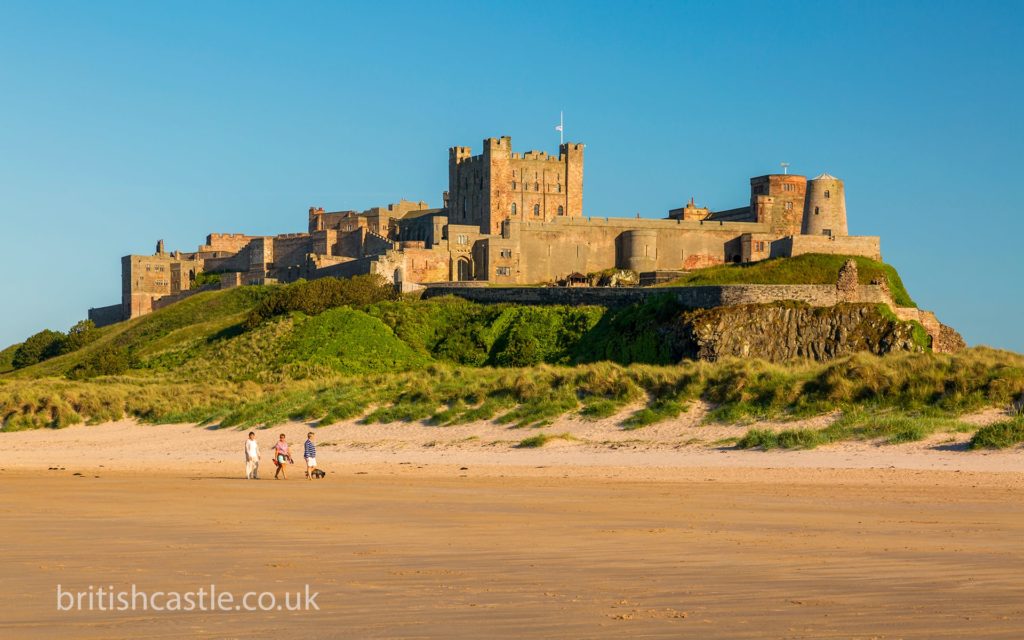
Archaeologists have found evidence to suggest that the rocky crag has been occupied since prehistoric times. Bamburgh Castle was almost entirely rebuilt 100 years ago though the large Norman keep, built in the 12th century, still remains as a reminder of its medieval past.
The Anglo-Saxon History of Castle Bamburgh
Little is known about the true origins of Bamburgh Castle, however, the original site of what would become Bamburgh Castle was likely chosen due to its then-location in the capital of the Anglican Kingdom of Bernicia, home to the indigenous Celtic Britons. The outcrop on which this fort sat consisted of solid rock and served as the fortress’s main defence (armoury in the years between 200 – 500 was extremely primitive).
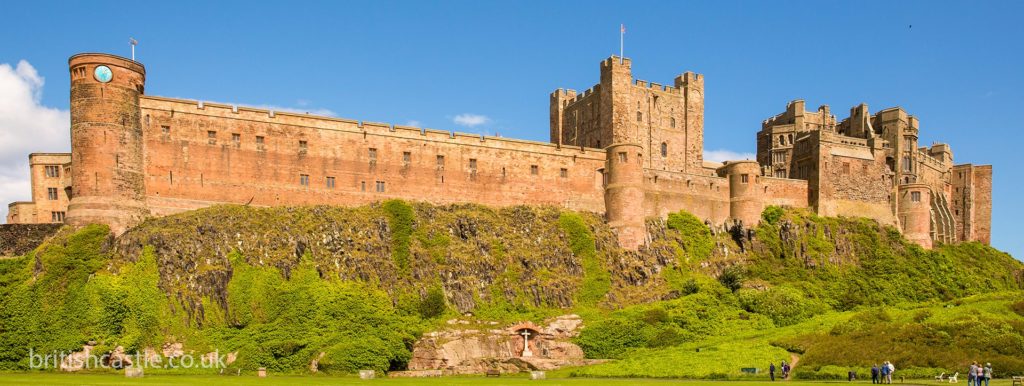
Despite this, the core fortified area of the building’s hull was captured by King Ida of Bernicia, becoming the ruler’s official seat in 547. While in power, Ida (also known as Ida the Flame Bearer) would lay the first timbers of a solidified wooden stockade––this would make up the original stronghold of what would become Bamburgh Castle,
Less than half a century later, the Britons reclaimed the fort from Hussa, son of Ida who had died in 559. For the next four hundred years, this sturdy and nondescript fortification, facing outwards toward the sea, would change hands multiple times during fraught and bloodied attacks against Northumbria by rival kingdoms upon the earliest of native Anglo-Saxons. Eventually, it would be outfitted with a defensive hull worthy of its size and importance.
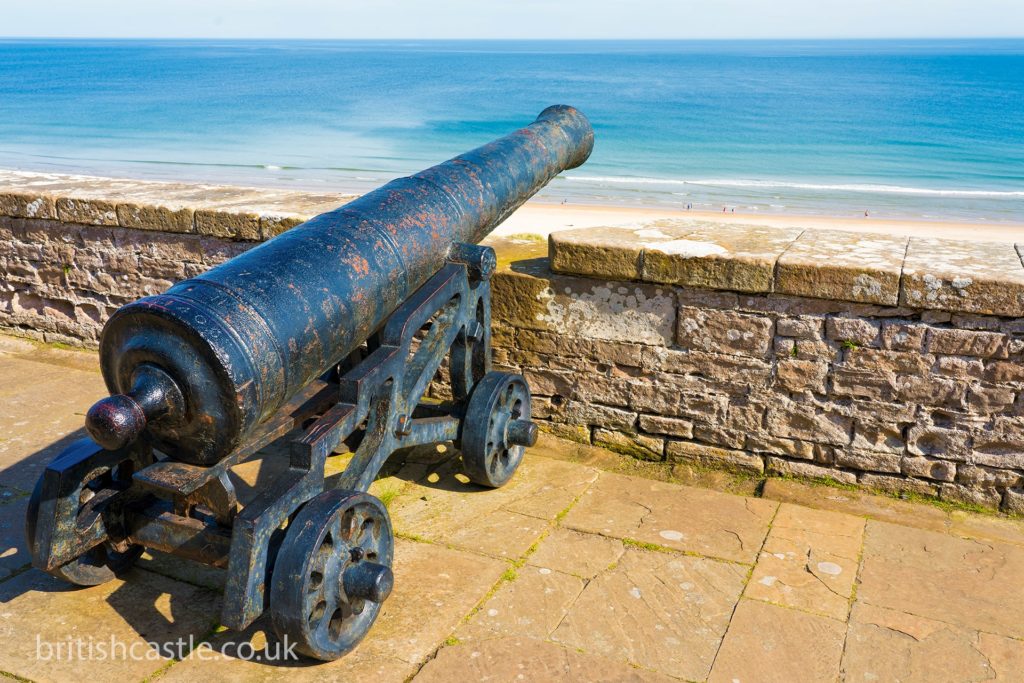
Forming the core of current Bamburgh Castle, the early Normans built a new stronghold on the rocky site in the early 11th century, following the former fort’s complete destruction by Vikings in 993. Upon its completion, Robert de Mowbray, Earl of Northumbria, was installed as the castle’s owner. But it wouldn’t be long until Bamburgh, again, witnessed unrest.
The thickness of its walls, 12 feet in places, in part gives explanation to its longevity. The outer castle walls are long and narrow and fronted the North Sea to its north eastern side. It consists of three wards. The majority of the living quarters, along with the 12th century chapel of Saint Oswald, are to be found within the inner ward.
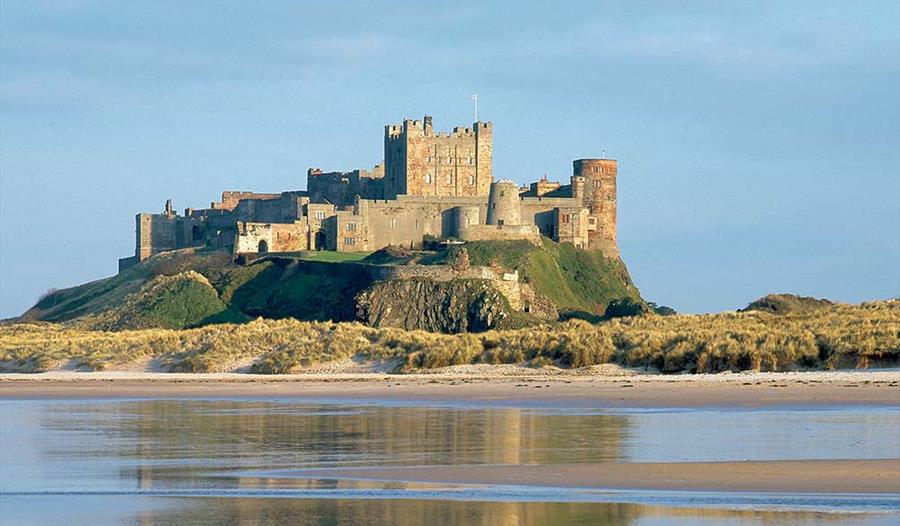
A Royal Asset
King William II of England, third son of William the Conqueror, attempted to besiege Bamburgh Castle in 1095, during a long standing revolt supported, in turn, by the Earl of Northumbria himself. While the besiegement proved unsuccessful, de Mowbray was captured by the king. The Earl’s wife was left to withstand the building’s defence but was ultimately coerced into relinquishing control following threats against her captive husband. This power move would be one of the most pivotal moments in Bamburgh’s history.
Bamburgh Castle was considered a valuable asset due to its proximity to Scotland, thus serving as a border garrison and strategic outpost during a time of ongoing conflict between the two neighbouring countries. As a result of the trade off with Robert de Mowbray, the castle became property of the reigning English monarch, whereupon a sturdy and expansive keep was erected––and it would stay that way for centuries.
Throughout the 13th and 14th centuries, Bamburgh Castle hosted a long lineage of monarchs, including famed Welsh conqueror and town walls builder, Edward I, as well as Henry III, whose on-site tenure involved outfitting the castle with more liveable and decorative touches, including glass windows and the construction of the Great Hall.
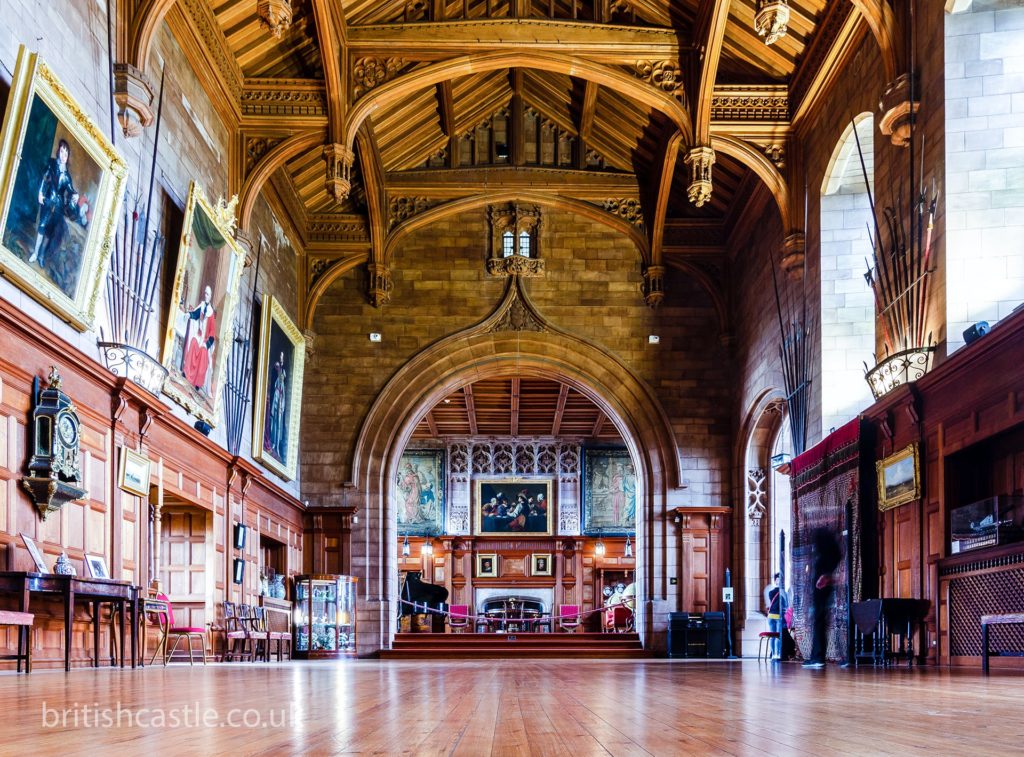
With modernisation elements in place, trouble would rear its head in Northumbria, about a century later, during the infamous War of the Roses in 1464. Duelling royal houses, the Yorks and the Lancasters, fought bitterly for country-wide control, and Bamburgh Castle, by then owned by Lancastrian King Henry VI, experienced heavy cannon fire and became the first castle in England to be destroyed by gun fire. The site remained in ruins for another century before taking on its next life.
Bamburgh retains several small well decorated rooms though the main attraction is surely the magnificent Great Hall which, although rebuilt in Victorian times, retains a medieval air.
The Forster Family
Defensive castles were not often at the mercy of feuding rebels by 1600 and Bamburgh Castle was by now viewed as something of a liability to the Crown. As such, King James I gifted the fortress to Claudius Forster, Bamburgh’s royal keeper, in recognition of his lifetime dedication and service. This marked the first time in more than 1200 years that the stronghold became the property of a private family. However, Claudius (as one can imagine) was not equipped to take on the financial responsibilities of maintaining a once-royal palace and Bamburgh again fell into ruin––until the bankrupt estate passed down to Dorothy, last heir of the Forster family.
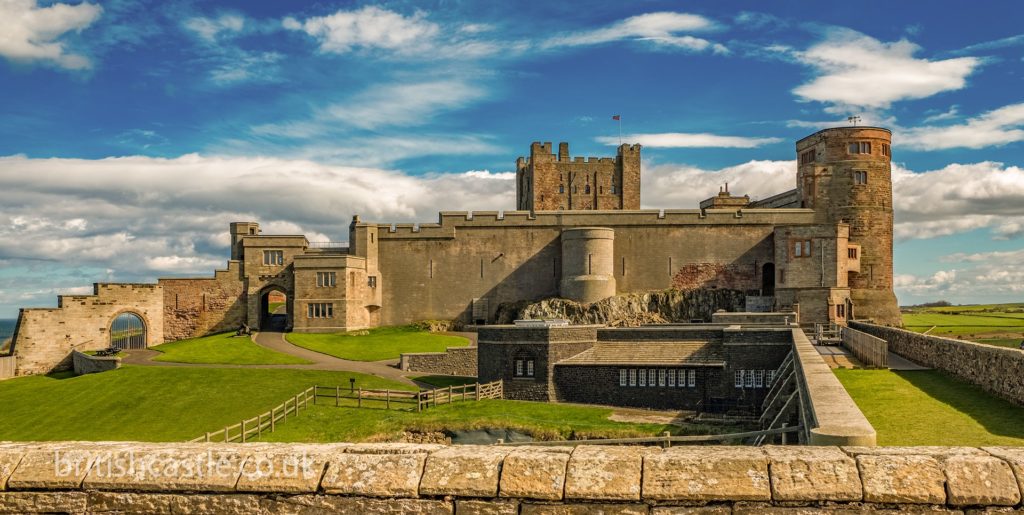
Dorothy Forster officially inherited Bamburgh Castle in 1701 and, fortunately, had the funds to assume control efficiently and effectively, alongside her husband, Lord Nathaniel Crewe, Bishop of Durham. During her lifetime, renovations were made to restore Bamburgh to its former glory, as well as financial support to the residents of nearby Bamburgh village. Following the death of Lord Crewe and his wife, a trust was set up for the continued upkeep of the castle and a dedicated Trustee committee, directed by Dr. John Sharp, was left to carry out the work.
With Dr. Sharp’s expertise in motion, various operations were run from Bamburgh Castle during restoration, including a pharmacy, a livery for locals, and a surgery––but it was Sharp’s pioneering nautical work in creating an early coastguard system that made Bamburgh a site of incredible and innovative modern feats.
William Armstrong and the Armstrong Family
Despite all of the progress set in place by Dr. Sharp––including the launching of the very first lifeboat from the coast of Bamburgh Castle’s shores in 1786––financial woes beset the owners and it was determined, by the Trustees appointed by Lord Crewe, to sell. And fortunately, another revolutionary thinker would come to the rescue.
Noted Victorian industrialist, William Armstrong, purchased the neglected property for £60,000 in 1894, with the intention of turning Bamburgh into a convalescent home for the retired. Armstrong, who had made most of his money shipbuilding and producing hydraulic machinery, and perhaps enamoured of the former Trustee overseer, John Sharp, famous for his visionary naval work, instead set about another transformative restoration period at Bamburgh. An early advocate and champion of hydroelectricity, water and solar power, the eco-influenced Armstrong set the wheels in motion to create a number of innovative, modern upgrades to the once decrepit castle––at an unheard-of cost of around £1,000,000. But, unfortunately, died in 1900 without witnessing Bamburgh’s great and final transformation.
One of the great restoration periods during Bamburgh Castle lifetime occurred under Armstrong’s reign and while much of the renovation work fell under the modernisation scheme, there were also defensive measures taken by his descendants to bring the ancient structure up to snuff––ironically, in preparation for yet another war.
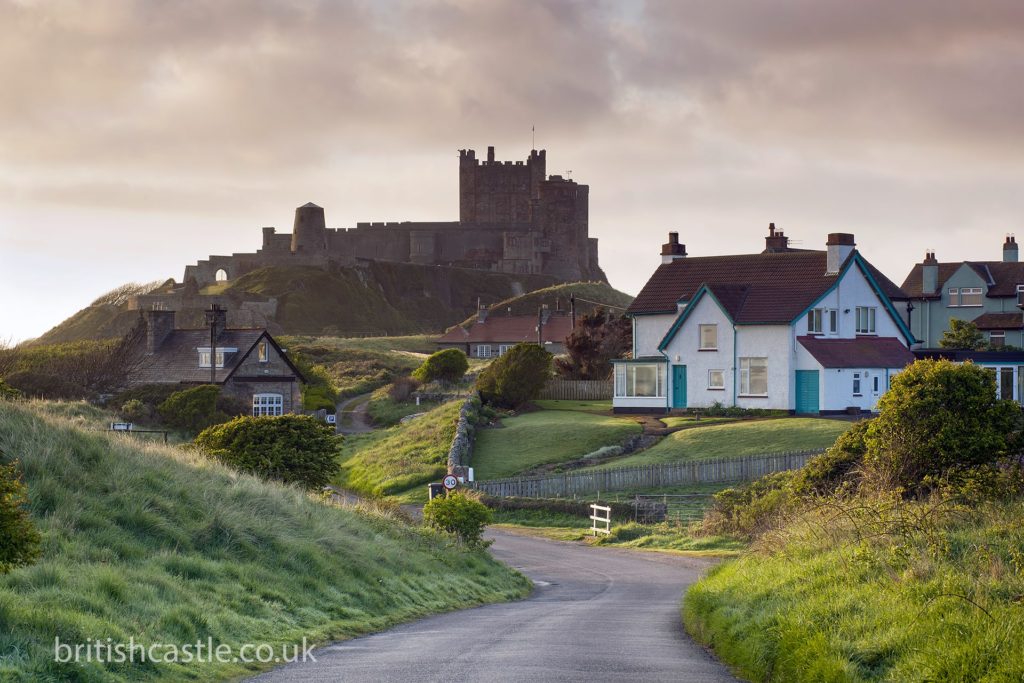
Bamburgh Castle in the Modern Era
Given Bamburgh Castle’s proximity to water, the 2nd Lord Armstrong, great nephew of William Armstrong, decided to continue his uncle’s vision of technological transformation and apply it to 1940s reality, enforcing the fortress’s surrounding sand dunes with concrete guard posts, or pillboxes, in order to ward off potential German invasion. These tactics, while common for many of the operational castles in England at the time, hearkened back to the days of artillery fire and sieges. Fortunately, Bamburgh escaped the Second World War unscathed, and many of the pre-emptive battle shielding can still be seen today.
Perhaps due in part to its solemn backdrop and relatively obscure location in northern England, Bamburgh Castle has served as backdrop in countless works of fine art and literature throughout the years. However, film buffs might recognize the fortification from its appearance in just as many classic movies––including “Becket” (1964), “The Devils” (1971), “Mary, Queen of Scots” (1971), “Ivanhoe” (1982) and “Elizabeth” (1998). It’s also appeared in the popular BBC/Netflix television program “The Last Kingdom”, based on the Bernard Cornwell’s The Saxon Stories.
Bamburgh Castle today
Today Bamburgh Castle is one of the finest, and most photographed, castles in England, commanding stunning views of the Farne and Holy islands and landward to the Cheviot hills. As well as being a popular tourist attraction it is licensed to conduct civil weddings.
Bought by the 1st Lord Armstrong in 1894, Bamburgh Castle is still owned and maintained by the Armstrong family. It is one of the largest castles in the UK that are still lived in.
Visiting Bamburgh Castle
Today, Bamburgh Castle remains in the possession of the children of the Armstrong Family, who have designated it a much-loved private residence. The current owners are as dedicated to preserving the site in appreciation for the advancements made over the centuries as their patriarch, William Armstrong. As such, Bamburgh Castle Estate welcomes thousands of visitors from around the world each year––all the priceless artefacts, fine artwork, décor and historical ephemera are on display.
Not only is Bamburgh Castle open to the public for guided tours, but it is also offers a popular destination for school trips and work retreats and caters to wedding parties. There are also regularly scheduled historical re-enactments performed on the grounds, in addition to admission, that feature traditional Anglo-Saxon characters squaring off for battle against impeding Vikings––all set against a 21st century backdrop.
There is also a heavy nod to the enlightened innovator, William Armstrong––who was also known as the Magician of the North––within the walls of Bamburgh Castle, and he is immortalised in the Armstrong Aviation Museum (one of the finest aviation museums in the United Kingdom), along with countless other interesting artefacts from both world wars.
Families and guests looking to visit Bamburgh Castle while exploring beyond the grounds can make it a weekend affair by booking a room in one of the Estate’s exclusive, self-catering holiday homes. These quintessential cottages, located within Bamburgh village––in full view of the castle––feature an out-of-this-world medieval experience like no other, and a welcome place to sleep within the original walls of this significant site.
Current opening times and admission fees can be found on the Bamburgh Castle website.